
The Pantry Moth Lifecycle.
It's the Larvae That Do the Damage.

The Pantry Moth Lifecycle.
It's the Larvae That Do the Damage.
The pantry moth lifecycle is as troubling as it is fascinating. These persistent pests can transform your well-stocked pantry into their personal breeding ground, with each stage of their lifecycle playing a vital role in their survival—and their ability to infiltrate your stored foods. From a female moth laying her eggs to the emergence of adult moths, understanding their lifecycle is the key to effective prevention and control. By identifying the most vulnerable stages, you can take impactful action to stop them in their tracks. In this guide, we’ll break down each stage of the pantry moth lifecycle and share essential tips to protect your food and keep your kitchen pest-free.
There are 5 Types of Pantry Moths to Look Out For
We recommend checking out our post on Clothes Moth identification to ensure you’re targeting the right moth problem. If Clothes Moths are your concern, don’t worry—Catchmaster has solutions to tackle them effectively, too!
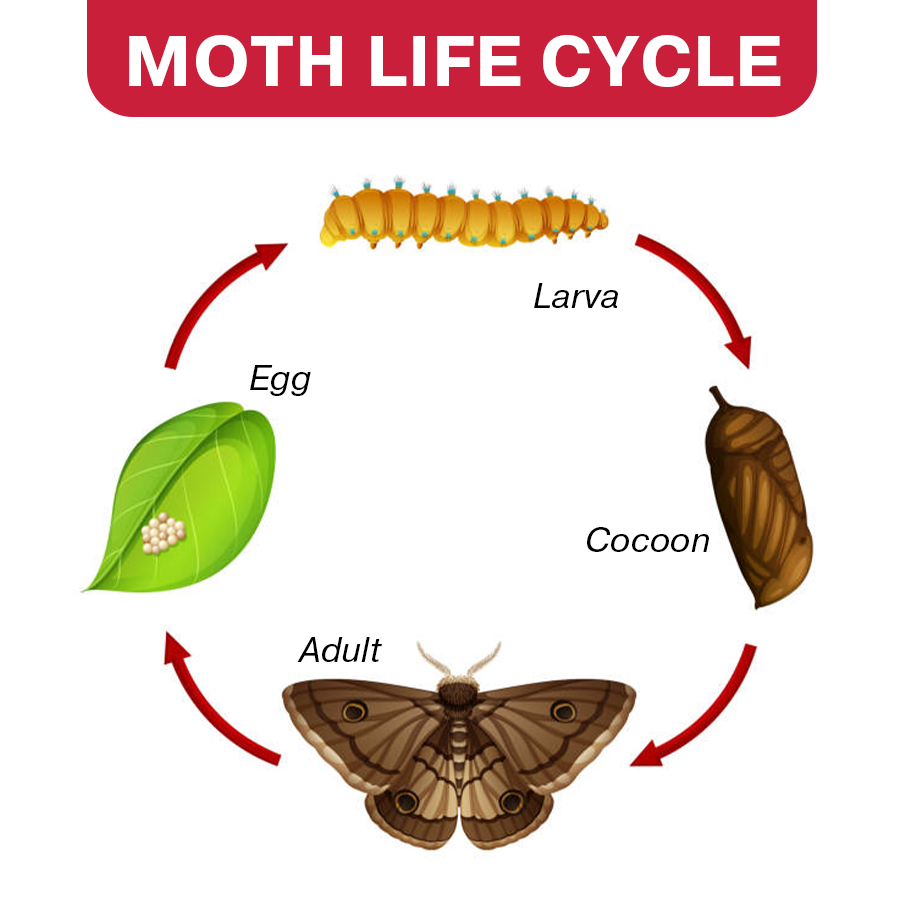
The Larvae Cause Most Damage During the Pantry Moth Lifecycle.
Moths go through a fascinating lifecycle: laying eggs, emerging as caterpillars, cocooning, and transforming into adults. What’s crucial to understand is how female pantry moths carefully select where to lay their eggs. They choose nutrient-rich stored foods—like grains, flour, dried fruits, nuts, and even pet food—ensuring their larvae have immediate access to food. These choices are consistent across the five most common pantry moth species, making them a universal challenge for stored food protection.
Once the larvae hatch from their eggs, they immediately begin feeding—consuming large amounts of food that will sustain them for the rest of their lives, including their own reproductive cycles. As they feed, larvae leave behind silk webbing and droppings, known as “frass,” which contaminate food and often make it appear clumpy. This feeding stage can last weeks to months, depending on temperature, humidity, and food availability.
During the cocooning phase, the moths stop consuming food entirely. Their sole focus is transformation into reproductive-ready adult moths, which may consume small amounts of liquids or nectar for hydration but do not seek nutrient rich foods. At this stage, their goal shifts entirely to reproduction.
Pantry Moths spend 75% of their lives in inert stages, making them difficult to stop. The best opportunity to tackle a pantry moth infestation is after they emerge as adults to reproduce. This is when they are highly susceptible to pheromone based glue traps, which target their breeding cycle and prevent it from starting over. Stop the cycle and protect your pantry with Catchmaster’s professional-grade traps.
Food Preferences Depend on Type of Moth Rather than Lifecycle Phase
Indian Meal Moths – Adults are about 3/8 of an inch long with wingspans between 1/2-3/4 inches. The front half of the wings are light gray or tan, and the back half is usually reddish-brown or bronze. They prefer to nest and eat in grains, cereals, nuts, dried fruit, pet food, and birdseed. Larvae spin silken webs in food that give an appearance of “clumpiness.”
Mediterranean Meal Moths – Adults are pale gray with dark gray markings on their wings. They are usually smaller than Indian Meal Moths. Their food preferences are flour and other finely ground, powdery grains. The larvae produce extensive webbing in flour and other finely-ground grains, result in contamination and ruin.
Meal Moths – Brown wings and a distinctive white stripe running down the middle of their body. They like to eat grains and cereals.
Almond Moths – Most similar to Indian Meal Moths in size, but with a darker appearance. Like Indian Meal Moths, they like to eat dried fruits and whole grains, but can also be found in nuts and chocolate as well. They primarily afflict warmer climates.
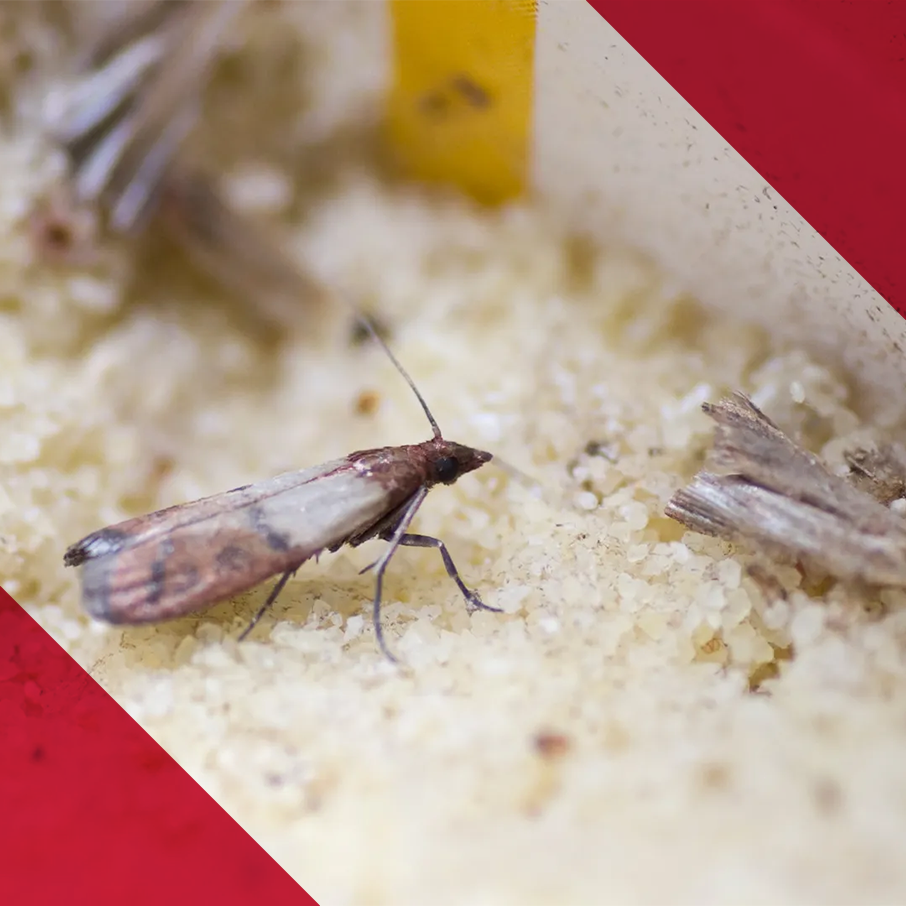
Adult Moths in the Kitchen or Pantry
- Appearance: Small moths with a wingspan of about 1/2 to 3/4 inch, often with two-toned wings (e.g., reddish-brown and tan for Indian Meal Moths).
- Behavior: Adult pantry moths are often seen fluttering near light sources or resting on walls and ceilings, especially in or near the pantry.
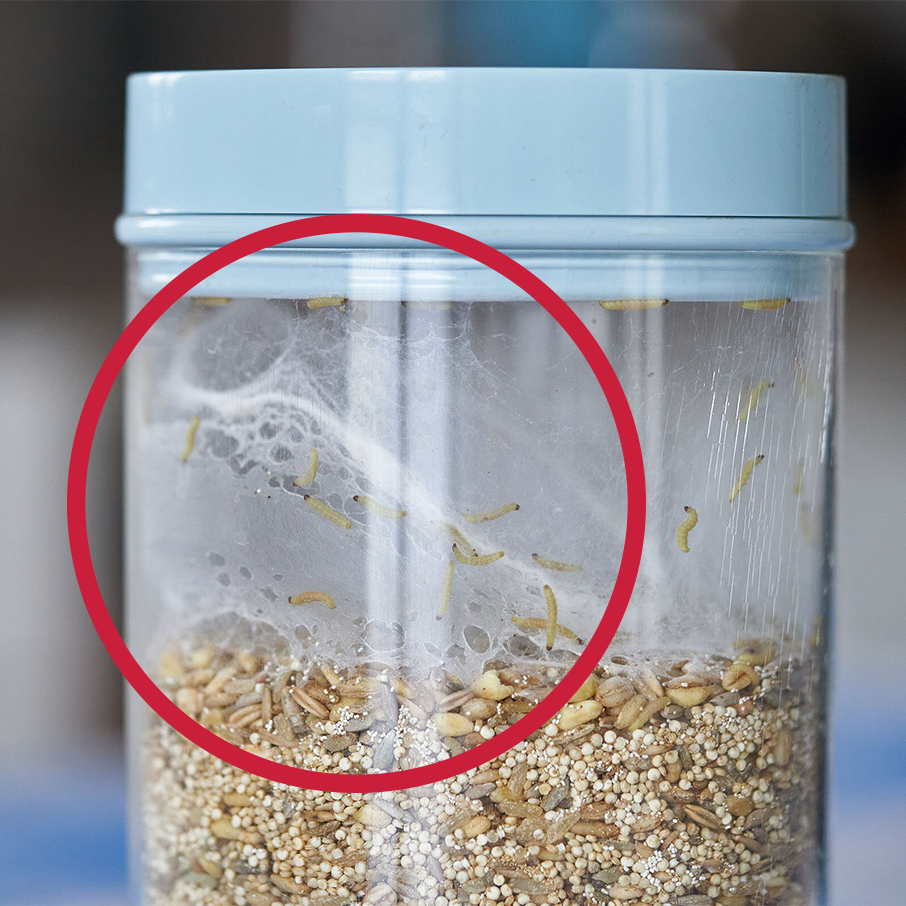
Webbing in Food or Containers
- Silken Webs: Pantry moth larvae spin fine webs in or around infested food.
- Clumped Food: Webbing may cause food particles (e.g., flour, grains) to clump together unnaturally.
- Locations: Inside food packages, along the edges of containers, or on pantry shelves.
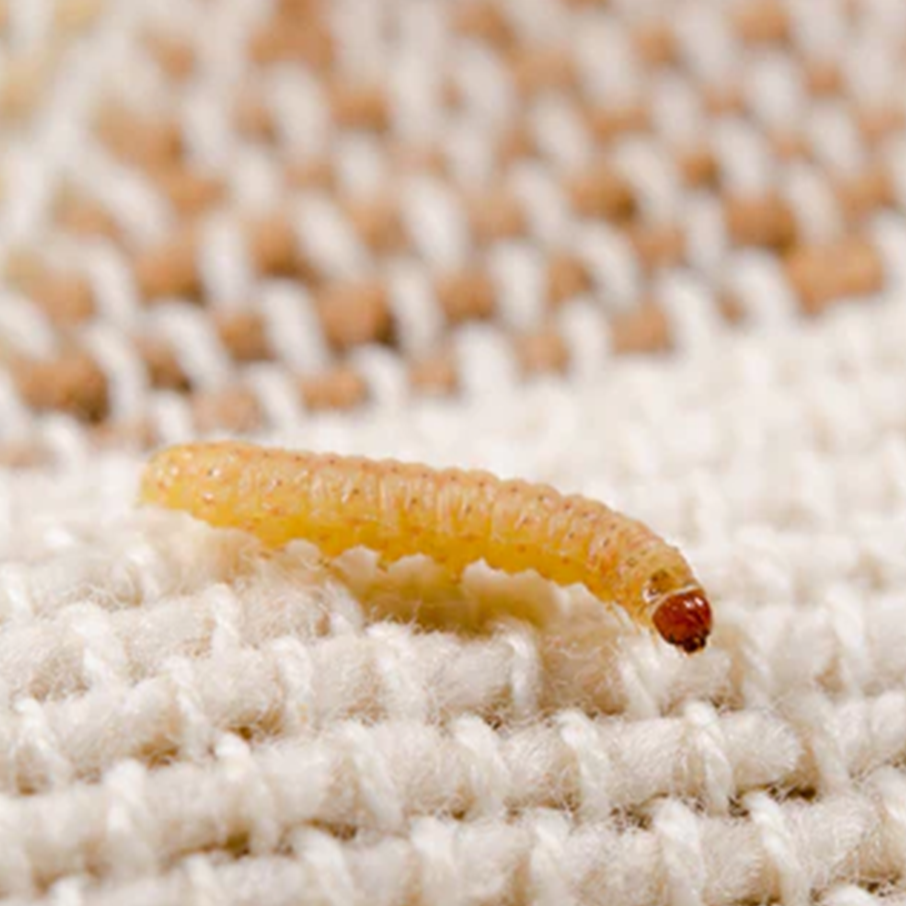
Presence of Larvae (Caterpillars)
- Appearance: Small, off-white or yellowish caterpillars with a brown head, about 1/2 inch long.
- Where Found: Inside infested food products and crawling on pantry shelves, walls, or ceilings in search of a place to pupate.
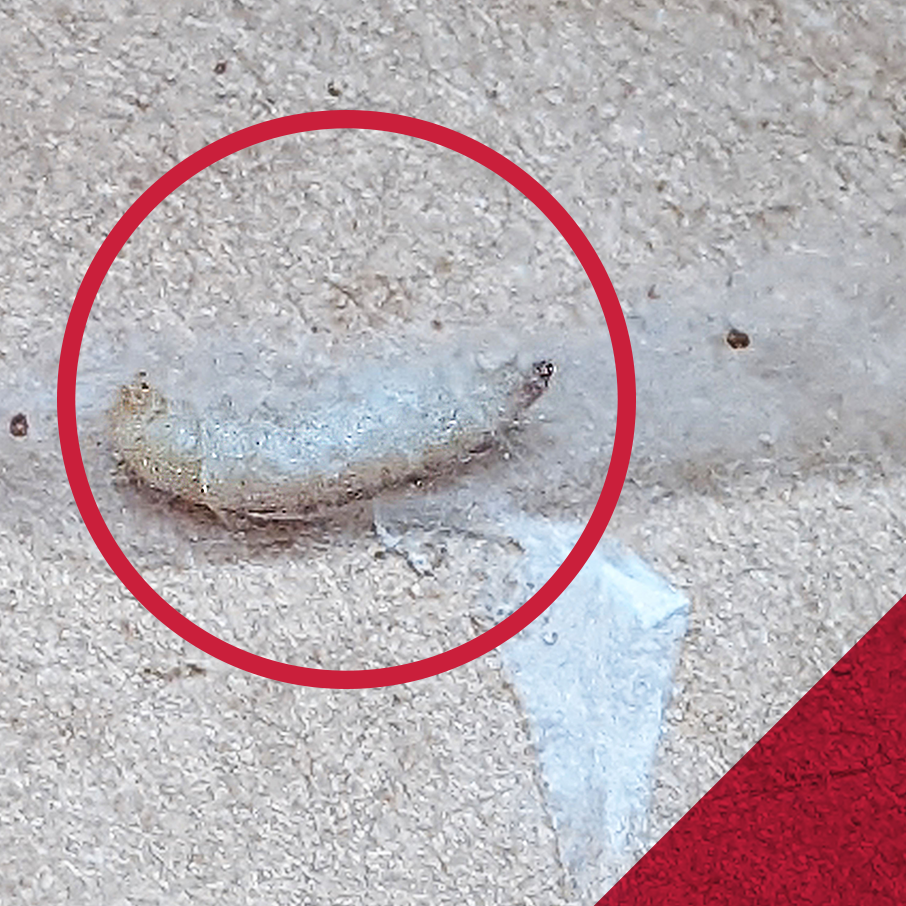
Small Cocoons or Pupae
- Appearance: Tiny, silken cocoons often hidden in pantry corners, crevices, or under shelf liners.
- Locations: You may find them in cracks between shelves, under bags, or even on the pantry ceiling.
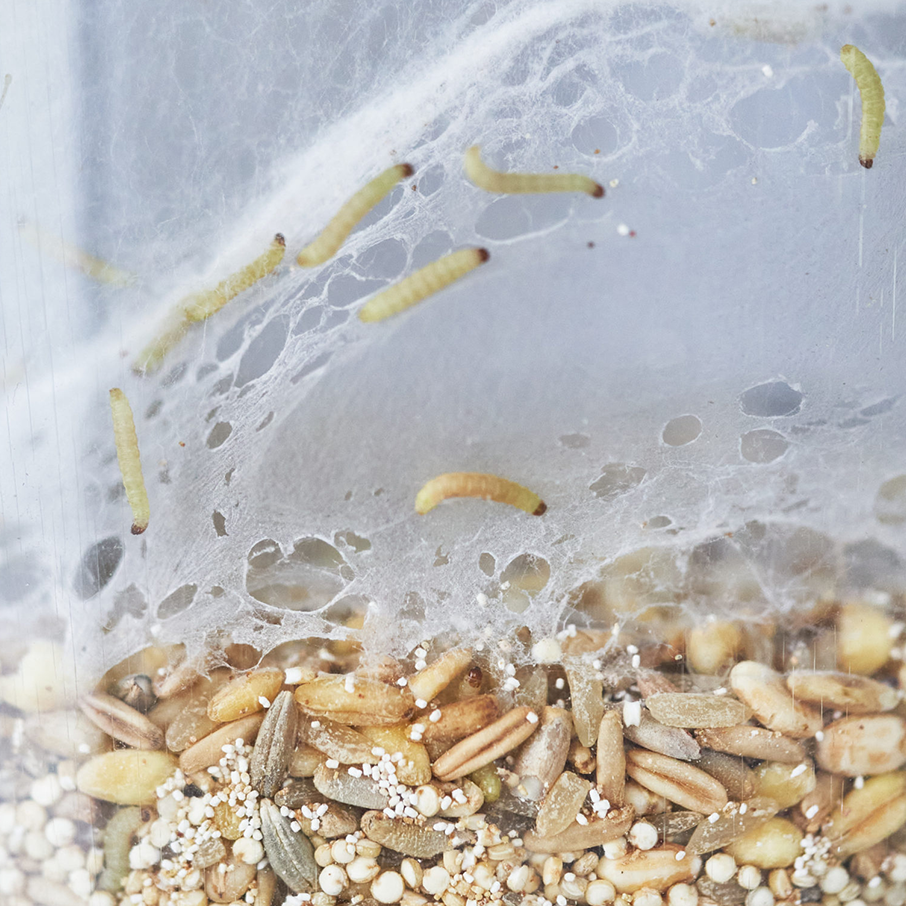
Food Contamination
- Infested Products: Check for small larvae, silk threads, or droppings (tiny black or brown specks) in stored foods like: grains, flour, nuts, dried fruits, pet food
- Off Odor: Contaminated food may have a stale or musty smell.
The Solution: Pheromone-Based Moth Traps
Pheromone-based glue traps are the ultimate solution for tackling adult pantry moth problems. If you’re looking for the best in moth-stopping power, look no further than Catchmaster’s Pantry Moth Traps. Trusted for over 70 years, our legendary glue is not only incredibly effective but also completely non toxic, eliminating any risk of further contamination to your food supplies.
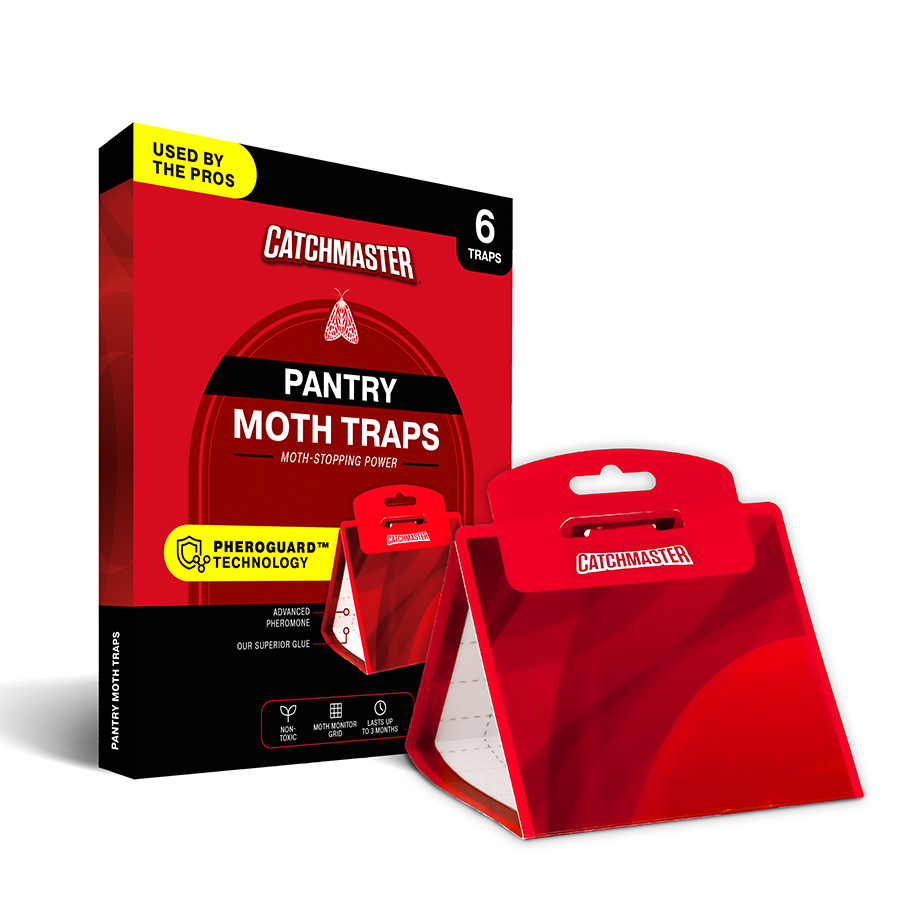
Moth-Stopping Power - Pantry Moth Traps by Catchmaster
These traps work by mimicking the pheromones female pantry moths naturally emit during their adult phase, drawing in male moths and trapping them securely on the adhesive surface. With Catchmaster, you can break the infestation cycle and take back control of your pantry, all while ensuring a safe and pest-free environment.
Catchmaster’s Pantry Moth Traps are incredibly easy to use—just peel off the adhesive cover, fold, and place. For optimal results, we recommend placing at least two traps per shelf in your pantry or dry food storage area, as well as on the floor.
Moths exhibit different behaviors depending on their location—they tend to fly higher up, closer to light sources, and crawl or walk around edges and corners closer to the ground. By placing multiple traps at various heights, you’ll ensure comprehensive pantry moth protection and effectively stop the infestation in its tracks. With Catchmaster, keeping your pantry pest-free is simple and hassle-free!
Each of Catchmaster’s Pantry Moth Traps comes with 20% more glue than competing Pantry Moth Traps for maximum moth-stopping power!
Conclusion
Pantry moth problems can wreak havoc on your food supplies, but they are preventable with proactive measures and effective tools. Regularly inspect food before purchase, store it properly in airtight containers, and keep your pantry clean to reduce the risk of infestation. If pantry moths do find their way into your home, Catchmaster’s Pantry Moth Traps are your trusted solution for the best in moth-stopping power. Designed with professional-grade, non-toxic glue and 20% more adhesive than competitors, they stop pantry moths in their tracks and break the infestation cycle. With the right approach, you can protect your pantry and enjoy peace of mind in a pest-free kitchen.
Key Takeaways
- Inspect Your Food: Check for signs of infestation before purchasing items like grains, nuts, and dried fruits.
- Proper Food Storage: Use airtight containers to keep pantry moths out and reduce contamination risks.
- Clean Regularly: Remove crumbs, spills, and expired food to eliminate potential moth habitats.
- Use Pheromone-Based Traps: Catchmaster’s traps target adult moths, disrupting their breeding cycle for effective prevention and control.
- Place Traps Strategically: Position traps at multiple heights in your pantry, including shelves and the floor, for comprehensive coverage.
With Catchmaster’s Pantry Moth Traps, you can confidently stop pantry moth infestations and protect your home from further damage.
Thanks for Reading!
You’ve taken your first steps toward becoming a Catchmaster! Use code MOTHSTOPPINGPOWER at checkout to save 15% on Pantry Moth Traps.








